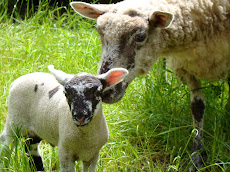Kale is a great, easy veggie to grow in any garden and it's easy to preserve. I like a flat leaf kale for preserving. This year I grew purple leaf kale, as well as a curly leaf for fresh eating.
Before you start ... wash out the sink and get your equipment read. Large pot, metal colander, slotted spoon, towels, ziplock baggies and sharpie.
Here are the steps for processing kale:
1. Wash and trim. I harvest when the kale is not too big, so the ribs aren't very tough and I leave them in. But you can trim the ribs out.
2. Rinse again after you trim it. Get all the dirt and bugs off.
3. Bring a pot of water to bowl and place a colander in the pot.
4. Add a couple handfuls of kale to the bowling water and push down with a spoon to submerge. Set timer to 2 minutes.
5. While it boils, fill the sink with cold water and ice.
7. Scoop the blanched kale out of the sink and put on towels to drain.
8. Repeat until all the kale is blanched and draining. You don't have to press the water out - it's ok if it's wet when you freeze it.
9. Label the ziplock baggies. I label all containers with what is in inside and the year I processed it.
10. Grab a handful of blanched kale and place in a baggie. I do one big handful per baggie. Seal and stack. Put in freezer.
I've kept the kale in the freezer for a year and it's still good. Add to soups and stews all winter long. And the final step is to give the leftovers to the chickens.































